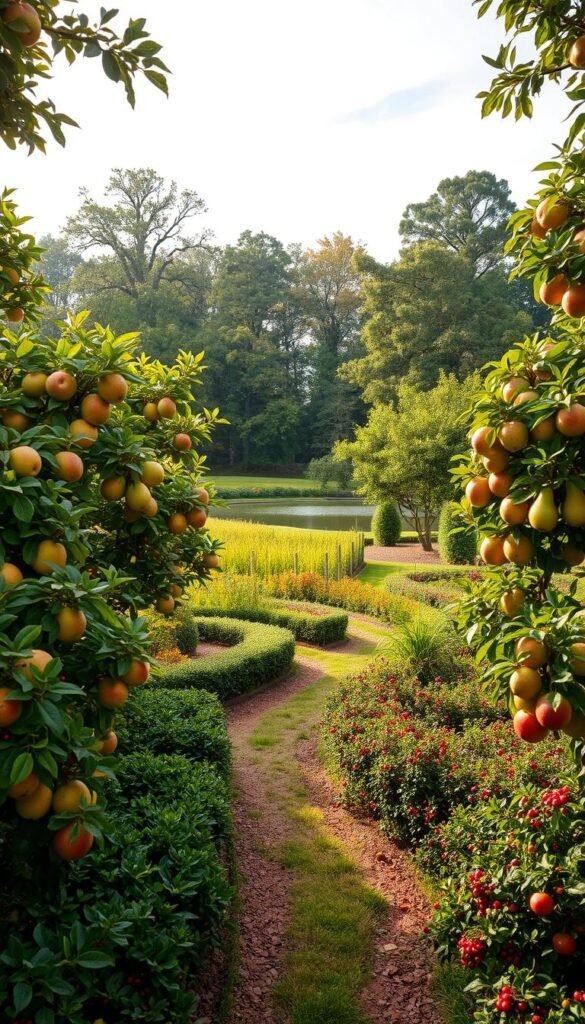When life slowed down in early 2020, many discovered new ways to reconnect with nature. A surge in outdoor projects emerged as families sought purpose in their yards. Landscaping professionals saw unprecedented demand, helping homeowners turn unused areas into thriving edible landscapes.
Take Debra’s side yard, for example. What was once a 15-foot strip of weeds became a lush, sun-drenched haven through collaboration with designer Jill. This four-plot layout now bursts with color and fresh produce—proof that even narrow spaces hold potential.
You’ll explore how strategic design solutions tackle issues like compact soil or limited square footage. These narratives aren’t just about aesthetics—they reveal how thoughtful planning creates spaces that nourish both body and soul. From pandemic-era projects to multi-season makeovers, each story offers adaptable ideas for your property.
Discover how proper irrigation systems revived waterlogged beds or how companion planting boosted harvests. These examples demonstrate that with the right approach, any yard can become a source of pride—and snacks.
Embracing a New Garden Journey
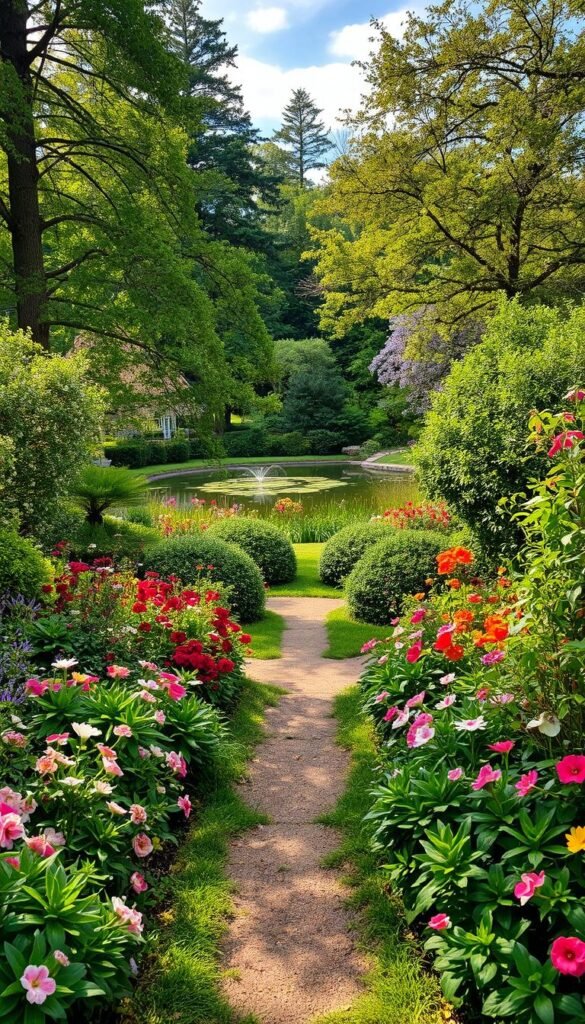
Recent years reshaped how many view their outdoor spaces. What began as temporary projects evolved into lasting connections with earth’s rhythms. This shift revealed something simple: cultivating green spaces feeds both pantry and purpose.
Rediscovering Your Connection with Nature
Digging hands into soil does more than grow plants—it roots you in nature’s timeline. Many find peace in tracking spring’s first sprouts or summer’s peak harvests. These moments create a living calendar that syncs with daylight and rainfall patterns.
Finding Inspiration in Seasonal Changes
Each phase of the year offers fresh lessons. Early blooms teach patience, while autumn’s bounty shows nature’s generosity. Observing how plants adapt through seasons helps you make smarter choices for your space.
| Season | Key Activity | Harvest Timeline |
|---|---|---|
| Spring | Soil prep & planting | 3-6 months |
| Summer | Pest management | 2-4 weeks |
| Fall | Compost building | 6-12 months |
This table reveals how time investment varies across growing periods. Those who stick with it often discover unexpected rewards—like sharing homegrown food with neighbors or teaching kids where meals originate.
Personal Stories of Garden Makeovers
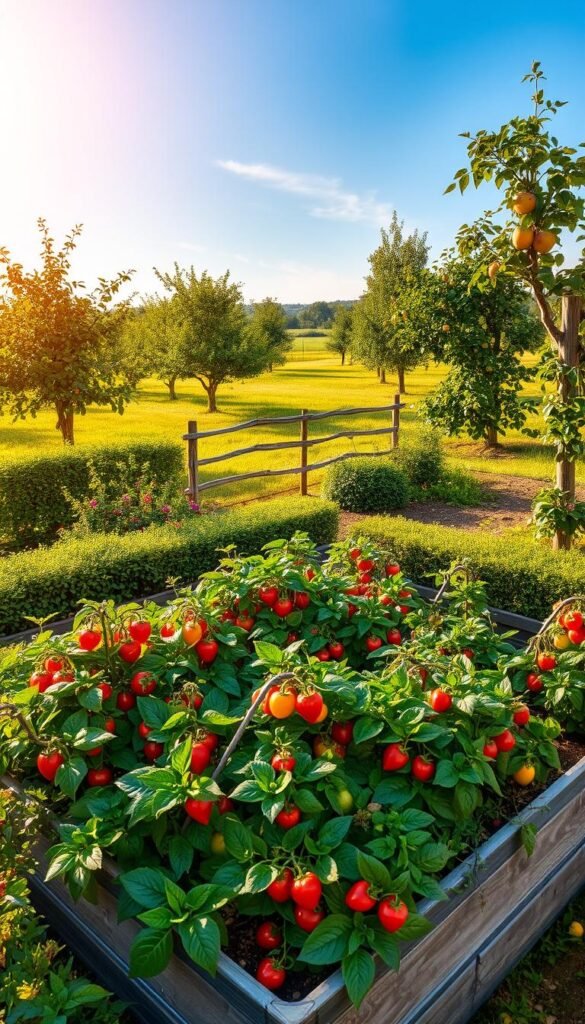
Homeowners across the U.S. are uncovering hidden potential in their outdoor areas. One client’s journey started with a narrow 15-foot strip beside her garage—a space previously dismissed as unusable. Working with designer Jill during quarantine, they transformed it into a vibrant four-plot oasis bursting with berries and flowering shrubs.
Real Testimonials from Satisfied Gardeners
Debra shares: “I never imagined our side yard could become the heart of our property. Now I pick raspberries while checking the mail!” Her story reflects a common theme—clients often underestimate what their space can achieve. Strategic layouts make even modest areas productive, blending edible plants with decorative elements.
Key benefits homeowners report:
- Doubled harvests from optimized growing zones
- Newfound confidence in maintaining fruit trees
- Daily routines enriched by garden interactions
Many express surprise at how quickly skills develop. One client noted: “By summer’s end, I was pruning like a pro.” These transformations prove that with smart design, any patch of earth can become a cherished part of your home.
Beautiful Fruit Garden Transformations: Before and After Success Stories
What if that awkward strip along your driveway became a vibrant edible showcase? Property owners nationwide are reimagining underused areas through clever design. That sloped eyesore? It could be terraced raspberry beds by next summer. The perpetually muddy corner? Perfect for cranberry bushes that thrive in wet conditions.
One family converted their flood-prone side lot into a dual-purpose rain garden with pawpaw trees. “We solved drainage issues while growing unique fruits our neighbors love,” they noted. These projects reveal how limitations often spark the most inventive solutions—like espaliered pear trees camouflaging old retaining walls.
Smart zoning helps multipurpose spaces shine. A sunny patio edge might host columnar apple trees, while shadier spots nurture currant bushes. This layered approach creates visual depth and extends harvest windows. You’ll find citrus trees doubling as windbreaks or grapevines shading seating nooks.
The real magic happens when garden makeovers address multiple needs at once. Blueberry hedges replace boring fences, offering privacy and July snacks. Rainwater collection systems feed dwarf peach trees while reducing runoff. Your challenging area could become the talk of the block—with the right mix of vision and practicality.
Designing Your Rain Garden for Dual Seasons
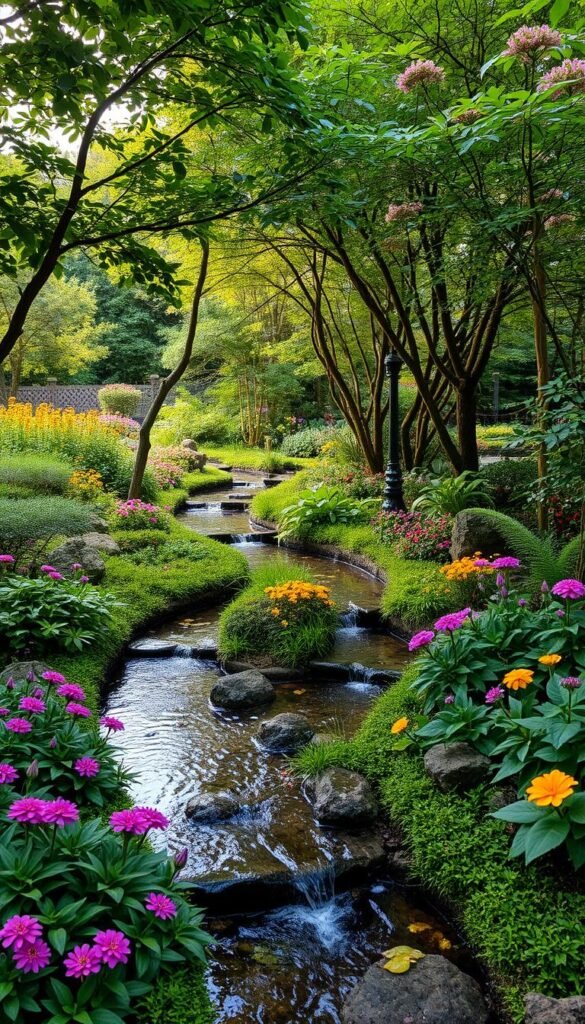
Many homeowners struggle with zones that flood in winter yet crack with drought by August. These tricky spots become golden opportunities when you harness natural water patterns. A well-planned rain system transforms problem areas into resilient ecosystems that work year-round.
Managing Water Flow and Drainage
Start by tracing where rain travels across hard surfaces like your driveway. One project redirected 90% of runoff from a 200-foot paved slope into a shallow basin. They built crescent-shaped berms using native soil to create temporary ponds during storms. This setup lets moisture seep slowly into the ground—no pumps required.
Choosing Plants for Wet and Dry Conditions
Select plants that laugh at extremes. Bluestar amsonia thrives in winter puddles and summer droughts. Baltic Parsley adds texture while tolerating deer visits. Pair these with feather reed grass for vertical interest—their deep roots stabilize soil during heavy rains.
Creative Tools and Techniques for Layout
Mark curved edges with biodegradable landscape paint for organic shapes. Zone your plants by water needs: moisture-lovers at the basin’s bottom, drought-resistant varieties uphill. One clever design used switchgrass to filter runoff before it reached the main driveway, reducing erosion.
These strategies turn weather challenges into advantages. Your rain-ready plant selections become living sponges—soaking up winter deluges and surviving dry spells with minimal care.
Transforming Your Space: From Drab to Dazzling
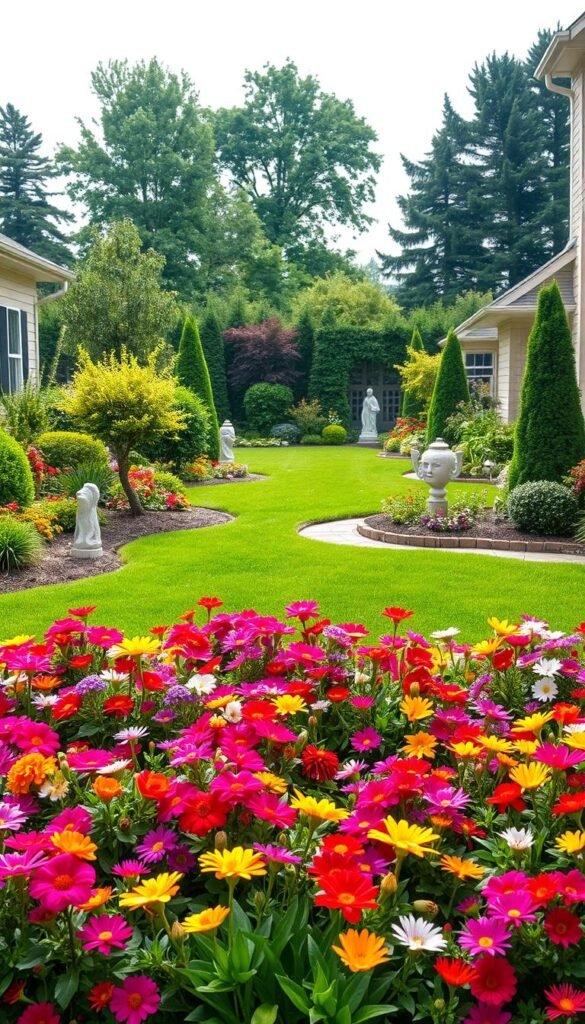
Your front yard holds untapped potential waiting to bloom. One homeowner’s journey began by clearing a water-wasting lawn and diseased oak tree—revealing a blank canvas visible from their driveway. This fresh start allowed them to craft a welcoming entrance that balances beauty with purpose.
Maximizing Every Inch of Your Garden
Smart layouts turn cramped spaces into high-performing zones. Choose plants pulling double duty—like dwarf citrus trees offering fragrant blooms and edible rewards. Vertical trellises boost growing room for climbing berries, while low-growing herbs edge pathways with texture.
Consider sightlines from every angle. A curved stone path guides visitors past seasonal highlights: spring tulips, summer hydrangeas, and autumn persimmons. “We wanted something beautiful year-round—not just pretty for two months,” shares a homeowner who transformed their front yard.
Key strategies for small space success:
- Remove struggling plants draining resources
- Layer heights with columnar trees and groundcovers
- Use color repetition to unify compact areas
These approaches help even modest gardens feel intentional. Your once-overlooked garden can become a neighborhood standout—one clever planting decision at a time.
Crafting an Orchard: Espalier and Cordon Tree Techniques
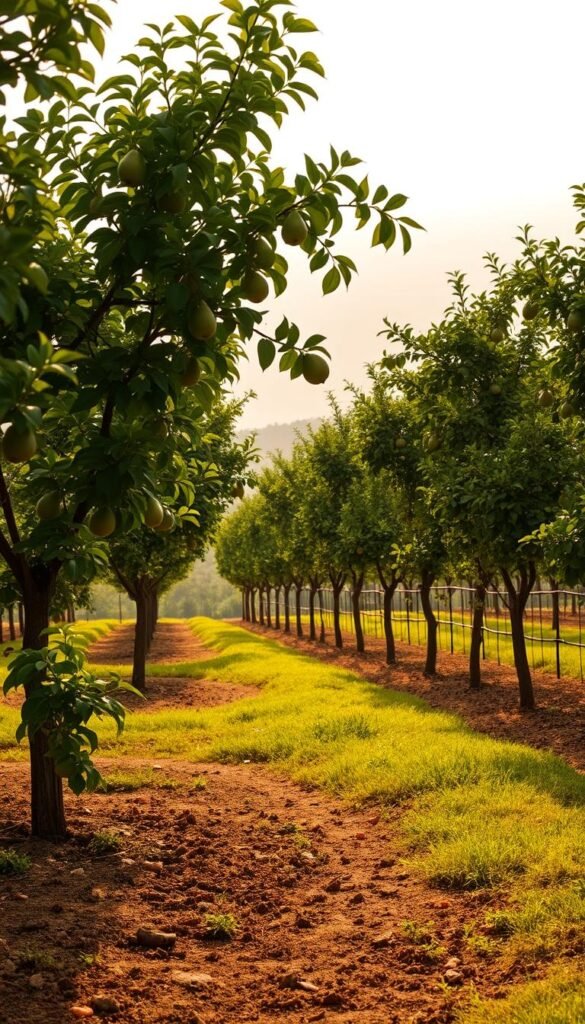
South-facing walls become goldmines for growing multiple fruit trees in tight spaces. Through strategic pruning and training methods, you’ll fit more varieties than standard planting allows while creating living art.
Building Foundations for Growth
Durable support systems make or break your project. Stainless steel cables with tensioners handle heavy loads without sagging. Anchor bolts spaced every 4 feet create stable frameworks that last decades. “Proper installation prevents snapped branches during windstorms,” notes arborist Maria Chen.
| Variety | Training Style | Harvest Window | Space Needed |
|---|---|---|---|
| Sunset Apple | Horizontal Espalier | Late August | 6′ width |
| Louise Bonne Pear | 45° Cordon | Mid-September | 3′ width |
| Winter Gem Apple | Fan Espalier | October | 8′ width |
Smart Choices for Small Footprints
Compact varieties thrive when trained against walls. Try Christmas Pippin apples for winter snacks or Beth pears for autumn preserves. These trees benefit from reflected warmth, often ripening fruit earlier than freestanding specimens.
Angle cordon-trained stems at 45 degrees to maximize sunlight exposure. This technique lets you plant 8-10 different fruit trees along a 20-foot wall. Regular summer pruning maintains shape while encouraging fruiting spurs.
Overcoming Gardening Challenges with Expert Guidance
Tackling tough outdoor spaces often feels overwhelming at first glance. Clay-heavy soil that bakes like concrete? Sun-scorched zones hitting triple digits? These obstacles become manageable with seasoned guidance.
One client battled compacted earth and deer raids. Their team mixed 40% fast-draining compost into the native soil, creating ideal conditions for drought-resistant serviceberry trees. “The difference was night and day—plants finally thrived instead of just surviving,” they shared.
Professionals assess your site’s unique needs systematically. They might suggest:
- Russian sage for areas alternating between winter floods and summer droughts
- Raised berms with gopher wire for problematic drainage spots
- Motion-activated sprinklers to deter hungry wildlife
This way of problem-solving addresses multiple issues at once. A well-designed garden plan considers microclimates, root systems, and maintenance routines. You’ll learn why certain plants tolerate specific stresses—knowledge that prevents costly replanting.
Seasonal follow-ups ensure young trees establish properly. Experts time pruning and feeding to your region’s weather patterns. What seems impossible becomes achievable through tailored strategies—transforming frustration into flourishing spaces.
Year-Round Garden Design: Pollinators and Seasonal Color
Creating four-season appeal in your landscape starts with understanding nature’s rhythm. Strategic plant pairings keep your space lively through shifting months, offering visual interest and vital pollinator support across spring, summer, and beyond.
Integrating Early Bloomers and Evergreens
Jumpstart the growing season with ceanothus ‘Ray Hartman’ – its electric blue flowers emerge when most plants remain dormant. Pair these showstoppers with fragrant rosemary bushes that bloom through late spring, feeding early bees while you enjoy fresh herbs.
Evergreen manzanita anchors your design during colder months, its sculptural branches contrasting with winter skies. Summer brings lavender spikes and coneflower bursts, maintaining nectar sources through heat waves. This layered approach ensures something always catches the eye – or a butterfly’s attention.
By mirroring color tones across seasons, you build visual harmony. Pale blue ceanothus petals find echoes in summer agapanthus clusters and fall asters. “The garden feels intentional yet wild,” shares a California homeowner who tripled hummingbird visits using this method.

